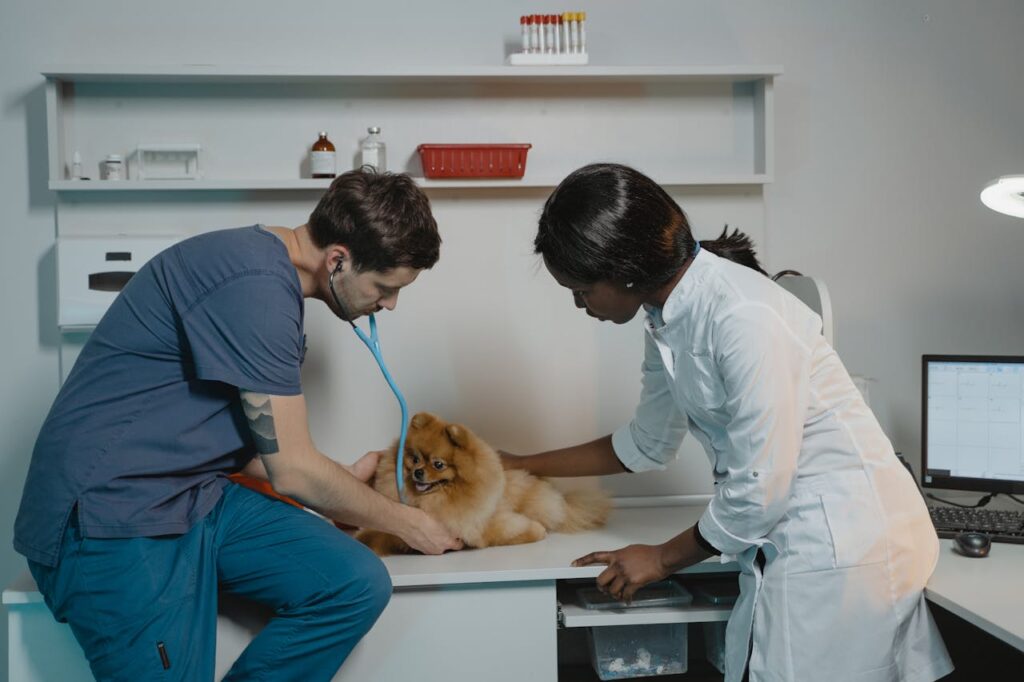As Pet Owners, we’ve all been in situations where our furry friends seemed unusually anxious, fearful, or stressed. Whether it’s a visit to the vet, a long road trip, or dealing with a medical procedure, there are times when tranquilization or sedation becomes a helpful tool for ensuring the safety and comfort of your pet. But how do you know when it’s truly necessary? Let’s explore this topic in detail.
What is the difference between tranquilization and sedation?
First, let’s clarify the terms:
- Tranquilization: This reduces anxiety and helps your pet relax while remaining awake and alert. It’s like giving your pet the equivalent of a calming tea.
- Sedation: This goes a step further, inducing a deeper state of relaxation where your pet may become drowsy or minimally responsive but still conscious. Think of it as the equivalent of feeling sleepy after taking strong medication.
The choice between these depends on the situation and your pet’s individual needs, as determined by a veterinarian.
Situations where tranquilization or sedation is necessary
While every pet is unique, there are common scenarios where tranquilization or sedation may be recommended:
- Vet visits and medical proceduresFor pets with a fear of the vet or those requiring complex procedures like X-rays, dental work, or minor surgeries, sedation ensures a stress-free experience for both the pet and the medical team. It minimizes movement, which is crucial for accuracy and safety during diagnostics or treatment.
- GroomingSome pets have a natural aversion to grooming tools, especially clippers or nail trimmers. For severely anxious pets, a mild tranquilizer may help them stay calm, preventing potential injuries during grooming sessions.
- TravelWhether it’s a short car ride or a long-haul flight, travel can be overwhelming for pets. Sedation might be necessary for pets prone to motion sickness or extreme anxiety, ensuring they remain calm and comfortable throughout the journey.
- Fireworks and thunderstormsLoud noises can trigger intense fear or panic in pets. For those who experience extreme distress during fireworks displays or storms, a tranquilizer can provide relief and prevent destructive or harmful behavior.
- Introducing a new environment or significant changesMoving to a new home, introducing a new pet, or even a change in routine can be stressful for some animals. Temporary sedation can ease the transition, helping them adapt without overwhelming anxiety.
- Aggression managementFor pets that display aggressive tendencies during certain situations, sedation may be necessary to protect both the pet and those around them. This is especially common during vet visits for pets with a history of fear-based aggression.
Is sedation safe for my pet?
When administered by a veterinarian, sedation is generally safe. Vets consider your pet’s:
- Age and weight: The dosage is carefully calculated to match your pet’s specific needs.
- Health history: Pets with underlying health conditions may require alternative methods.
- Breed-specific sensitivities: Some breeds are more sensitive to sedatives, which will influence the medication choice.
Modern sedatives are designed to be both effective and safe, with minimal side effects. However, always follow your vet’s instructions and never attempt to medicate your pet without professional guidance.
Common sedatives and tranquilizers for pets
Veterinarians use a variety of medications depending on the purpose:
- Acepromazine: Commonly used for calming anxious dogs and cats.
- Diazepam (Valium): Helps with anxiety and muscle relaxation.
- Gabapentin: Often used for chronic pain and anxiety.
- Dexmedetomidine: Frequently used for mild to moderate sedation in dogs.
Always discuss the potential side effects and post-sedation care with your vet.
What to expect after sedation
Post-sedation, your pet may be groggy or disoriented for several hours. It’s essential to:
- Provide a quiet, comfortable space for recovery.
- Monitor their water and food intake, as sedation can cause temporary nausea.
- Keep an eye out for any unusual symptoms like excessive drooling or difficulty walking, and notify your vet immediately if they occur.
How to prepare your pet for tranquilization or sedation
- Fast your pet as instructed by your vet, especially if sedation is required for a procedure.
- Provide a calm environment before the appointment to reduce anxiety.
- Bring familiar items, like a favorite blanket or toy, to provide comfort during recovery.
Final thoughts
While the thought of tranquilizing or sedating your pet might feel daunting, it’s a tool that can significantly improve their well-being during stressful situations. Always consult with your veterinarian to ensure the decision is tailored to your pet’s specific needs.
Need to discuss tranquilization or sedation for your pet? Contact Atlas Animal Hospital today. Our compassionate team is here to guide you through every step to keep your furry friend healthy and happy.

